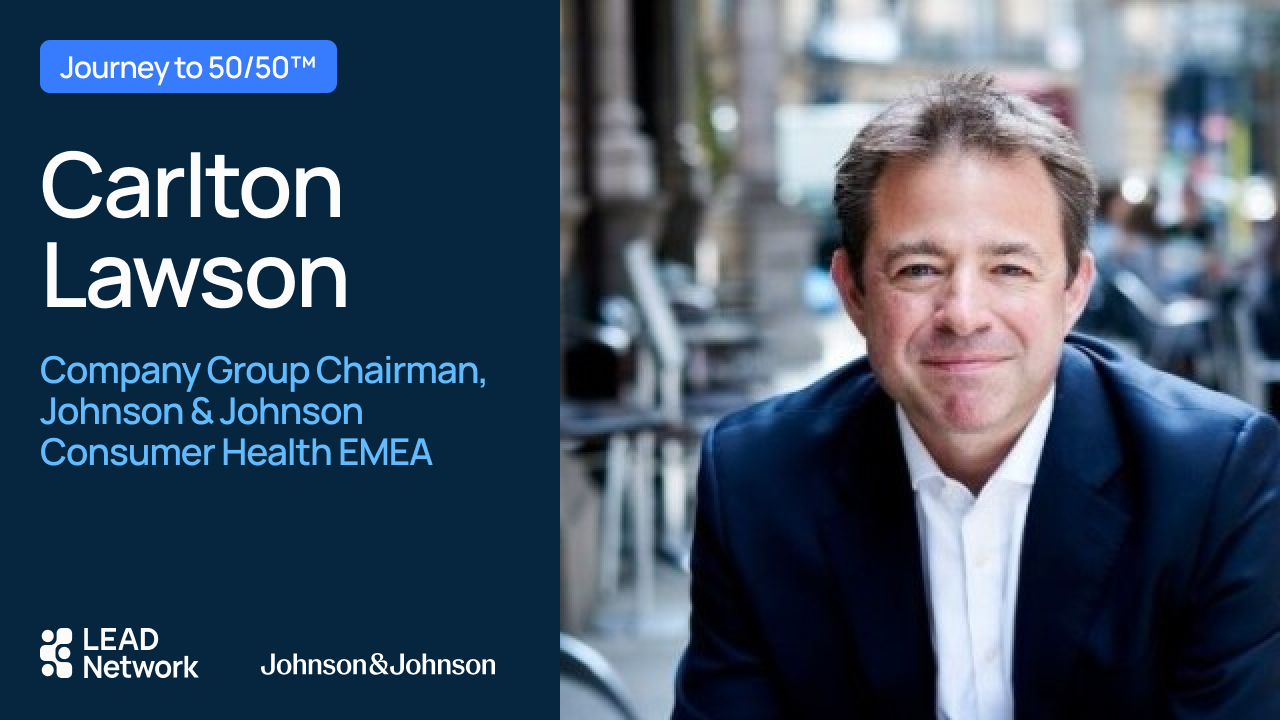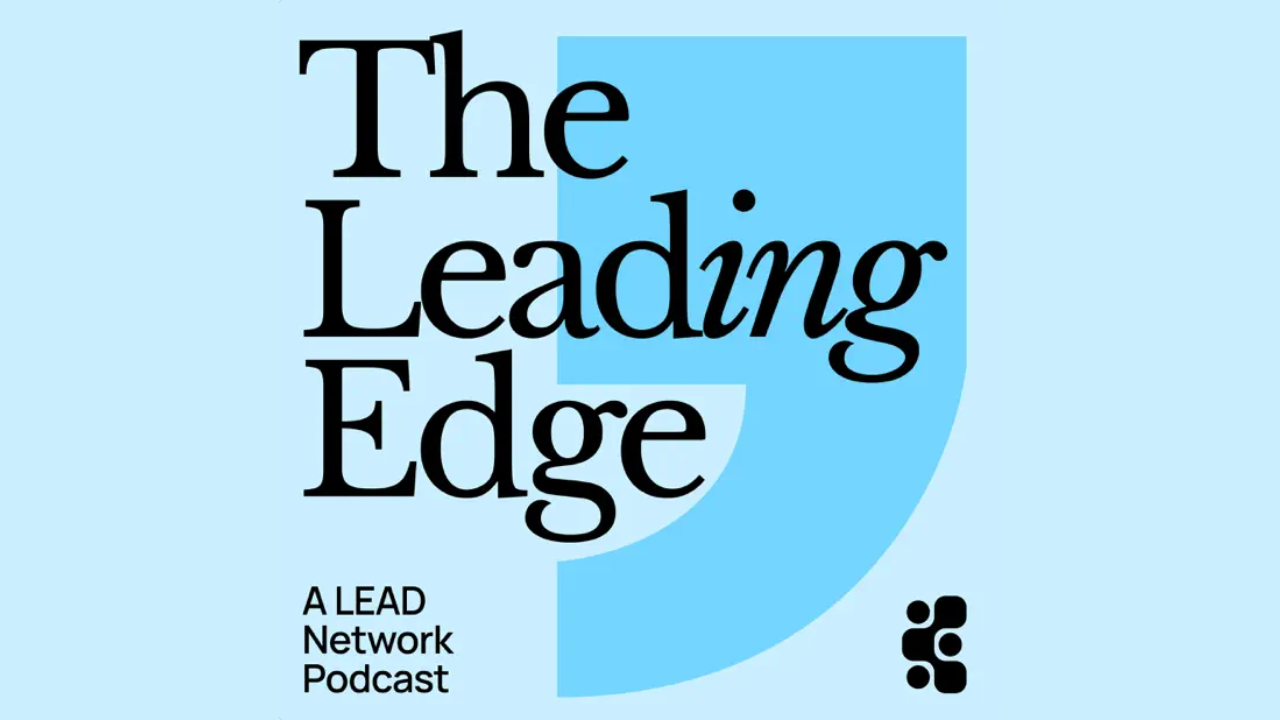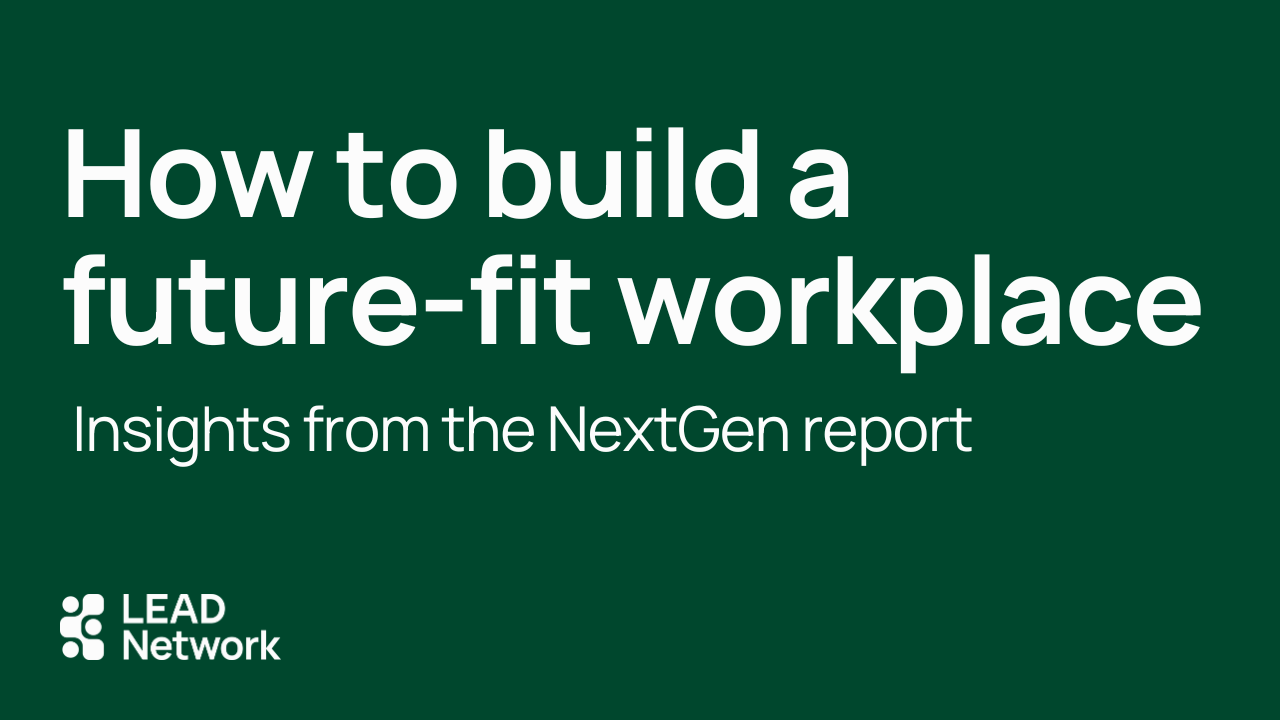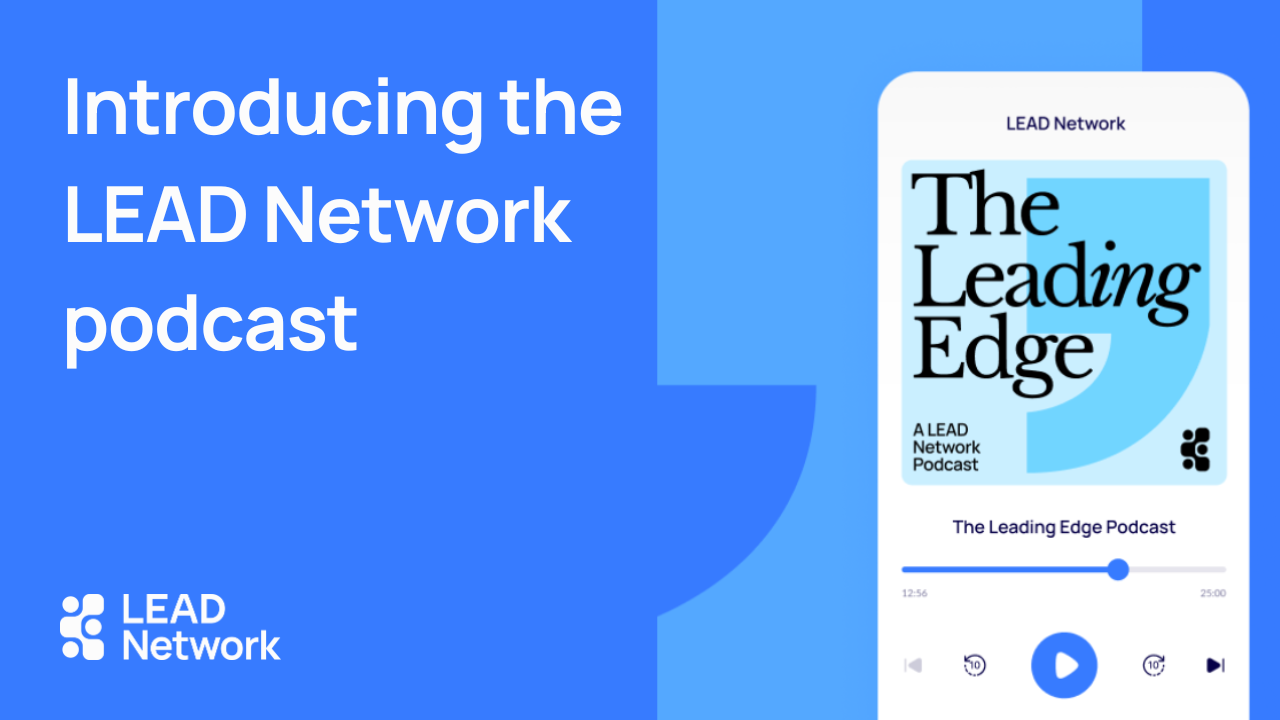Carlton Lawson of Johnson & Johnson: Set the tone at the top

The Journey to 50/50 series is part of our commitment to sharing best practices among industry leaders. It aims to capture top-level insights for CEOs, by CEOs, to inspire those who are traveling a similar path.
Career snapshot
As the Company Group Chairman for Johnson & Johnson Consumer Health EMEA, I focus on making a positive impact on people’s personal health through our consumer brands. Prior to this role, I was Managing Director of the Northern Europe business at Johnson & Johnson Consumer Health. I’ve previously been Head of Global Categories at GSK, where I led the global marketing team, and Marketing Director for Pfizer Consumer Healthcare UK and Ireland. My wife is a doctor, and we raised our family as a dual-career couple, which gave me a lot of empathy and insights into how we can best support brilliant talent who are juggling family and professional commitments. I divide my time between the UK and Switzerland and I love travelling with the family. I’m an extrovert; sharing new experiences with people is how I recharge.
Johnson & Johnson’s D&I journey
As a business we have a long track record of treating our people fairly and with respect, and making sure everyone feels like they belong. Johnson & Johnson Consumer Health has been a foundation partner of LEAD Network since 2016 and our values are absolutely aligned. Johnson & Johnson’s Health for Humanity goals require that we achieve gender parity in management positions globally by 2025.
Johnson & Johnson’s approach
We want to be inclusive, to make sure people don’t feel like they have to be a different person at work. It’s not just about gender; it’s vital that we think broadly about diversity, equity and inclusion (DEI), whether it is sexual orientation, race, age, or different abilities. We’ve just published our third We All Belong: Diversity, Equity & Inclusion Impact Review which charts the progress we made in 2021. For example, we broadened our enterprisewide DEI goal-setting programme beyond our most senior leaders to all 27,000 people leaders across Johnson & Johnson. Each of these leaders was asked to commit to at least one annual DEI goal. And an additional 20,000 individuals opted to do the same. Progress made against these goals is assessed in the year-end performance review, and is linked to compensation, helping to drive real, measurable change.
Johnson & Johnson is a science- and technology-based business, and talent in that space is at a premium, which helps to drive diversity. We do a lot of work with school-age girls and young women to encourage them to consider a STEM career. We have a number of initiatives to accelerate the development of talent, for example our Ascend and enterprise sponsorship programmes. And we also have a paid four-month returnship programme, Re-Ignite, available in several countries around the world, to help professionals get back into a STEM career after a career break. Re-Ignite offers onboarding, mentoring and technical training within a nurturing, inclusive environment.
Learning 1
Set the tone at the top
When I was growing up, my mother worked, but she also kept the family together as my father pursued his career. So when I came into the workplace I firmly believed in diversity and meritocracy: I hired people on the basis of who was best for the job. This meant I had a gender-balanced team, and I quickly began to learn more about the challenges facing women in the workplace. I remember having to convince women to take promotions. They would say, ‘Am I ready, can I do it?’ It was about confidence; I never heard it from men. Setting the right tone from the top and establishing management accountability are really important. We have had DEI goals that have long been in place for senior management, but now all managers have very clear DEI targets. It needs to be all managers, because otherwise the layer of middle management becomes the glass ceiling. When we hire, we are looking for talent who will be allies to reinforce an inclusive culture.
Learning 2
Listen to your employee resource groups
At Johnson & Johnson we have lots of different employee resource groups (ERGs), such as Open and Out, which is for our LGBTQ+ community, and the Alliance for Diverse Abilities, which I sponsor. One of our longest-standing ERGs is the Women’s Leadership Initiative, which was set up more than 25 years ago. Initially it was for women to share their experiences, but it has expanded over time to become a significant influencer in how we set our agenda to promote women. We hear from women in the business about what they need, and that in turn informs our strategic approach. Our STEM initiatives came from that; it’s a cohesive environment.
Learning 3
Use the power of your brand to drive wider social change
CPG companies can use their brands, marketing and scale to drive the agenda and eradicate stereotypes. Johnson & Johnson champions positive role modelling; we call this CAST, which stands for ‘Casting Aside Stereotypes Today’. We audit our output to make sure we are representative of the audiences we serve. We also leverage our procurement, through our Supplier Diversity & Inclusion Programme, which has a track record of advancing supplier diversity around the world. In the UK, we are one of seven founding partners of the Buy Social Corporate Challenge, an initiative to promote the use of social enterprises in corporate supply chains. In addition, we support minority-owned and women-owned businesses as part of our UK programme.
Next steps for Johnson & Johnson
We want to retain and attract the best talent we can. We know from research that Gen Z and Millennials have high expectations of companies, and this makes a massive difference to who they choose to work for. Those firms that only pay lip service to diversity, they avoid. But companies that are driving a diverse and inclusive agenda, and are socially responsible, will attract all that new talent.
Next steps for our industry
Covid has opened our minds to the possibility of flexible working. In Europe we were pretty flexible already but I think the pandemic has opened our eyes further, presenting opportunities to have more flexibility, whether that is condensed hours, job sharing or remote working. Johnson & Johnson is now trialling a hybrid workplace, with a blend of days in the office and days working remotely. It’s still important to come together regularly to innovate and it’s good for people’s mental health. I believe flexible working will encourage more people to stay within the workforce at all life stages, so they can get fulfilment from both their career and their family life.
Share this article
More articles
June 10, 2024
June 10, 2024


